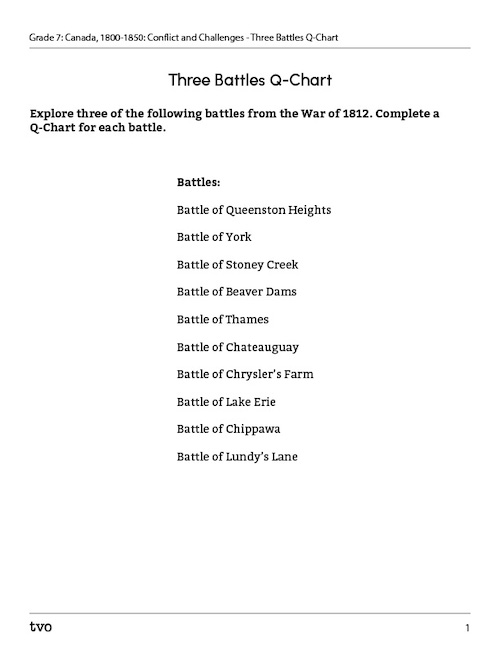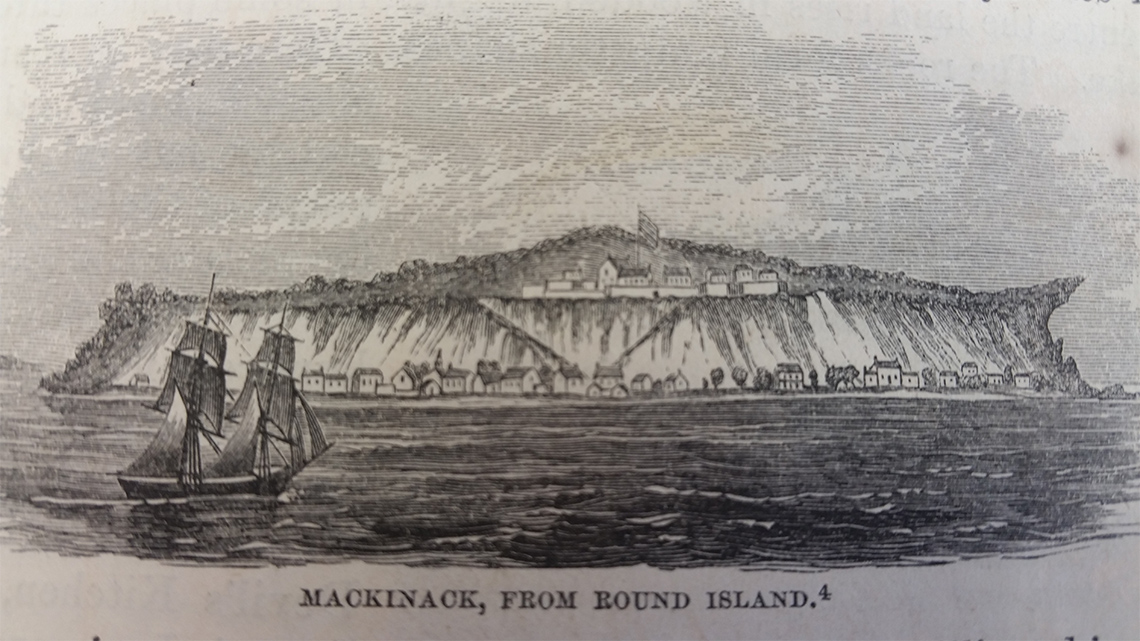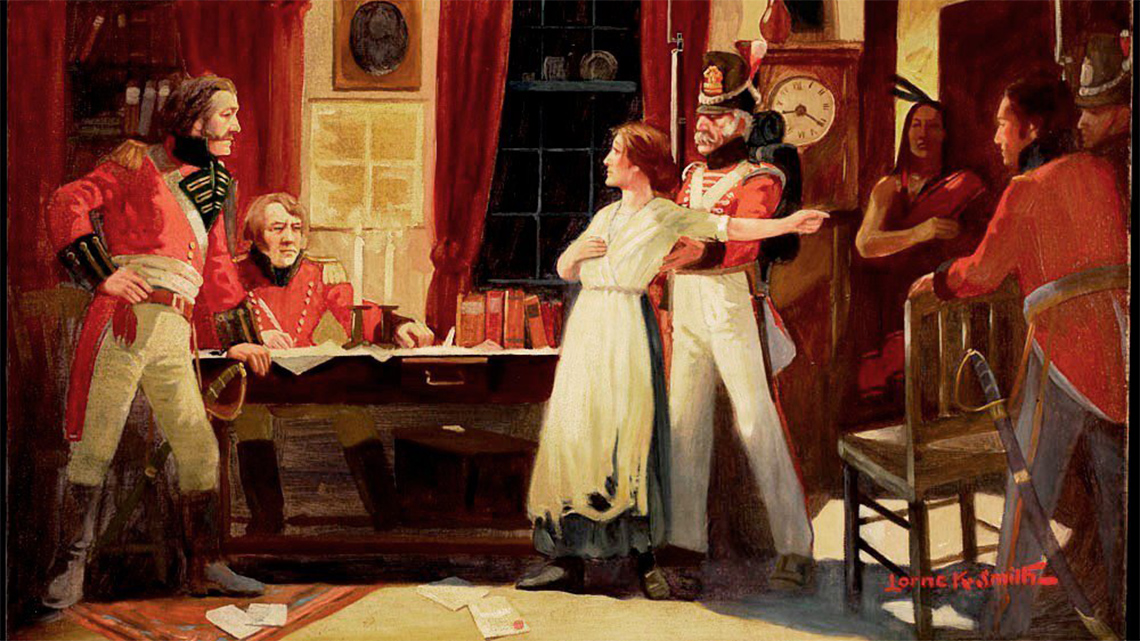Minds On
The War of 1812
In this learning activity, you will be investigating one of the most significant wars in Canadian history. The War of 1812 was a conflict between the United States and Britain that erupted for mostly economic and political reasons. The now-independent Americans were fed up with British interference in their economic and political activities. Since Canada was a British North American colony at the time, the conflict affected Canada directly.
Access the following Heritage Minutes about the War of 1812. As you explore the videos, take note of any important places or people from the video.
Student Success
Think-Pair-Share
If possible, have a discussion with someone about the Heritage Minutes using these prompts or record your thoughts using a method of your choice:
- How did the First Nations support the British in the battle of Queenston Heights?
- Who was Laura Secord? What did she overhear?
- Why did Richard Pierpoint want to fight in the War of 1812?
- What acts of bravery and courage did you notice?
- Whose voice is heard in these videos? Whose is missing?
Note to teachers: See your teacher guide for collaboration tools, ideas and suggestions.
Action
Task 1: Causes of the War of 1812
War often has many causes. Some are long-standing problems between nations, while others are dangerous sparks that inflame attitudes and push nations to call to arms. In this task you will be exploring different causes that led to the War of 1812.
Brainstorm
What do you think?
Before you begin your investigations, consider what you know about tensions between Canada and the United States during this time. What might they disagree about?
Press the ‘Hint’ button if you’d like some help with this question.
Let’s explore the causes of the War of 1812 in detail. As you are reading, think about whether each reason is a direct or indirect cause of the War of 1812.
Press the following tabs to access definitions for direct and indirect causes.
Reason 1: Trade blockages
For many years, Britain and France had been at war in Europe. Due to this conflict, a blockade of shipping was ordered. A blockade is when a place is sealed off to prevent goods or people from entering or leaving. This blockade was aimed at destroying British trade.
Britain responded to the blockade by blocking American ships entirely from trading with Europe. They began to stop and search ships for “contraband,” or goods that had been imported or exported illegally. These actions further angered the Americans.

Now let’s check our understanding by answering the following question.
Reason 2: “Chesapeake Affair”
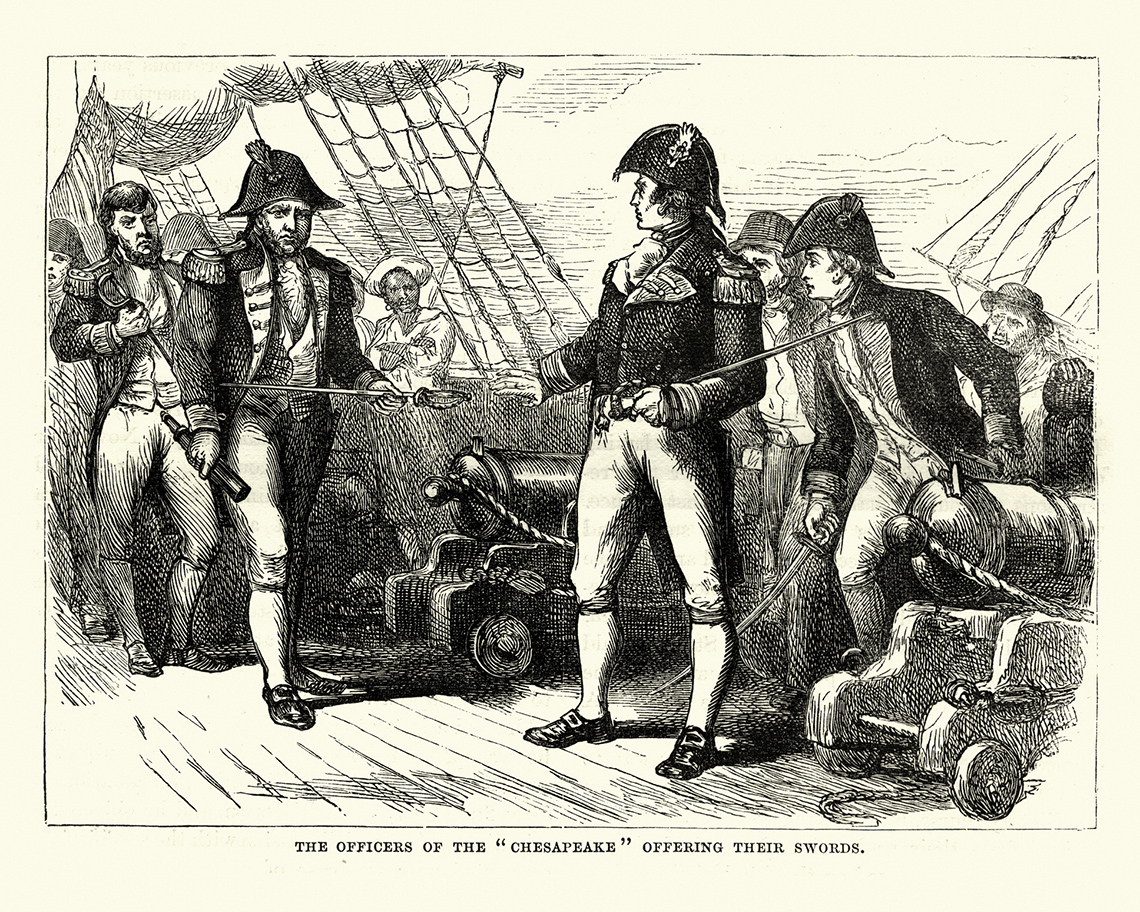
Officers of the USS Chesapeake
With ships being blockaded, tensions continued to grow between the British and the Americans. Near Chesapeake Bay, British naval forces were attempting to block two French ships. Many of the British who were on the vessels were forced into the service of blocking ships and conditions on the vessels were very undesirable. As a result, abandonment of ships was a constant problem.
In the summer of 1807, several men abandoned British vessels to join the “USS Chesapeake,” commanded by the Americans. The British government found out about this and ordered the Americans to return the men immediately and issued an order for a search. The Americans refused, noting that the men were forced into the British naval service. This enraged the British. They fired a cannon at the Chesapeake vessel, injuring several and killing three men. The Americans attempted to fight back, but the Chesapeake vessel was not in good condition. Eventually, they surrendered.
Source: Ridler, J. (2011, May 9). Chesapeake Affair 1807. Chesapeake Affair 1807 | The Canadian Encyclopedia. https://www.thecanadianencyclopedia.ca/en/article/chesapeake-affair-1807.
Now let’s check our understanding by answering the following question.
Reason 3: “War Hawks”
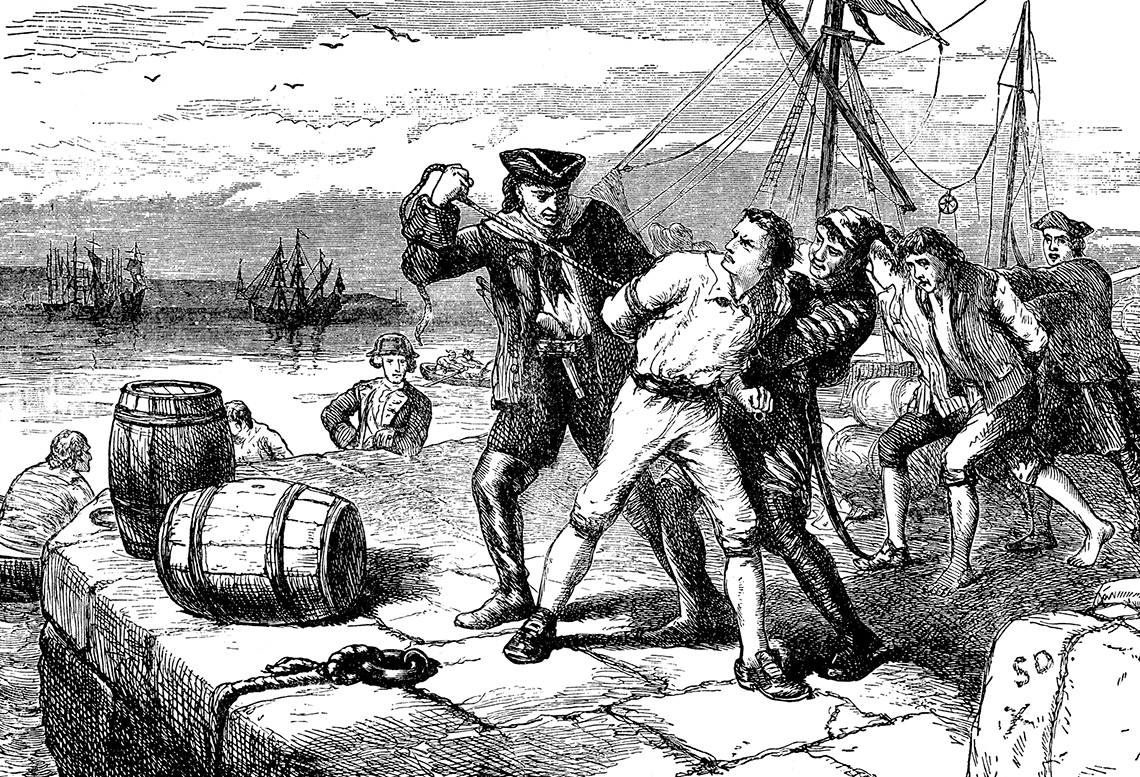
Americans being tied up by the British
During this period, Americans continued to attempt to expand their settlements. They were often met with resistance, which they believed were encouraged and supplied by the British in Canada. As a result, resentment and dislike for the British continued to grow and were fueled by conflicts happening at sea during the blockades.
A new group of politicians, known as “War Hawks,” led by Henry Clay, began to emerge. They were very loyal to America and they desired war with Britain as an attempt to end the ongoing attacks at sea. They wanted to restore the nation’s honour and possibly expel British settlers from Canada. These politicians continued to put pressure on the American government to declare a war against Britain to address American grievances.
Source: Hickman, K. (2020, August 29). What Caused the War of 1812? ThoughtCo. https://www.thoughtco.com/war-of-1812-causes-of-conflict-2361354.
Now let’s check our understanding by answering the following question.
Task 2: Battle inquiry & mapping
Battle inquiry
For this activity, you will be completing an inquiry into battles that occurred during the War of 1812.
Before we begin, let’s learn about the inquiry process.
Press the ‘Inquiry’ button to explore this term.
Inquiry process
An inquiry is a multi-step process used to formulate questions, gather, organize, and analyse information, evaluate and draw conclusions, and communicate results.
Although the stages of an inquiry are not always done in the same order, the following graphic provides a summary of these steps. Examine the diagram to understand how the steps relate.

A graphic representing the inquiry process. There are five stages to the inquiry process, but they are not always done in the same order. One stage is Interpret and Analyse. At this stage we analyse the data, evidence, and information, using different types of graphic organizers as appropriate. Another stage is Gather and Organize. At this stage we collect and organize relevant data, evidence, and/or information from primary and secondary sources and/or field studies. Another stage is Formulate Questions. At this stage, we formulate questions related to the applicable overall expectation in order to identify the focus of their inquiry. Another stage is Evaluate and Draw Conclusions. At this stage we synthesize data, evidence, and/or information, and make informed, critical judgements based on that data, evidence, and/or information. Another stage is Communicate. At this stage, we communicate judgements, decisions, conclusions, predictions, and/or plans of action clearly and logically.

In this task, you will be exploring three battles that occurred during the War of 1812. As you are researching each battle, take jot notes of important people, places, and key details.
Use the following fillable and printable Three Battles Q-Chart, or another method, to help you create deep historical questions about your topic. For example, what were some short- and long-term consequences of this battle for both sides? How were First Nations groups involved?
Begin your research by exploring online encyclopedias, government databases, and virtual museums.
Student Tips
Reliable sources
How do you tell if a source is reliable? As you are researching, it is important that the sources you are using are reliable and credible. Use the following suggestions to help you think critically about your sources and determine if each of your sources is reliable and credible.
- Who is the author? Did they have a purpose?
- Where is the content from? Is the publisher well known?
- How does this source compare to others?
When you are finished your research and inquiry questions, create a presentation about one of the battles. You can choose any of the following methods to create your presentation. Consider your audience when planning. Also consider what would be the most appropriate method to share this information.
- newspaper article
- slideshow
- written article
- oral presentation
- infographic
- Bristol board/poster
Use this checklist to guide your inquiry:
Mapping
In this activity, you will investigate ten battles from the War of 1812 and identify their locations on the following printable Northern Frontier in the War of 1812 map.
Battles:
- Battle of Queenston Heights
- Battle of York
- Battle of Stoney Creek
- Battle of Beaver Dams
- Battle of Thames
- Battle of Chateauguay
- Battle of Chrysler’s Farm
- Battle of Lake Erie
- Battle of Chippawa
- Battle of Lundy’s Lane
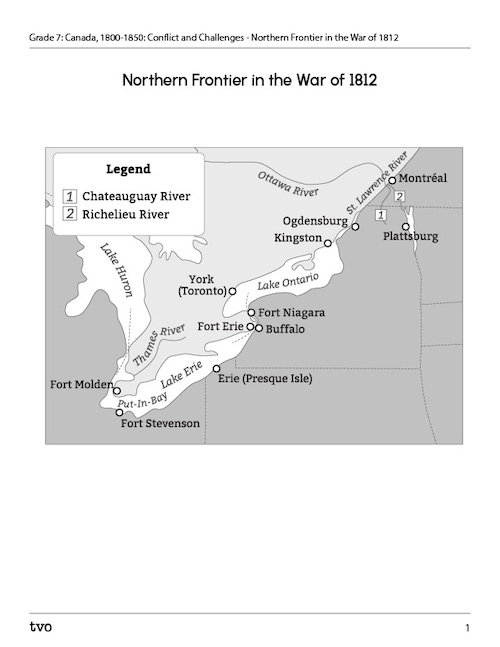
Press the Activity button to access the Northern Frontier in the War of 1812.
Activity(Opens in a new tab)When you’re ready, press the ‘Answers’ button to reveal the locations of the battles in the War of 1812.
Sample map

A map of the War of 1812 with key battles labelled. The Battle of Lake Erie is located at Put-In-Bay at the southern end of Lake Erie in Pennsylvania. The Battle of Thames is located at the Thames River in Upper Canada north of Lake Erie. The Battles of Stoney Creek and Beaver Dams are located in Upper Canada on the western side of Lake Ontario at Fort Erie. The Battle of Chippawa is located in New York state near Buffalo. The Battles of Queenston Heights and Lundy’s Lane are near Fort Niagara. The Battle of York is located at York (Toronto). The Battle of Chrysler’s Farm is located at Ogdensburg along the St. Lawrence River in New York state. The Battle of Chateauguay is located near the Chateauguay River and Montreal in Lower Canada.
Task 3: First Nations involvement
First Nations peoples played a significant role in Canada in the War of 1812. The conflict forced Indigenous peoples to overcome longstanding differences and unite with the British. At the time, they believed they were the group most interested in maintaining traditional territories and trade. In this case, both groups had the same goal: resist the American expansion.
First Nations allies were often accompanied by officials from the Indian Department, who helped First Nations war chiefs and British military commanders speak to each other.
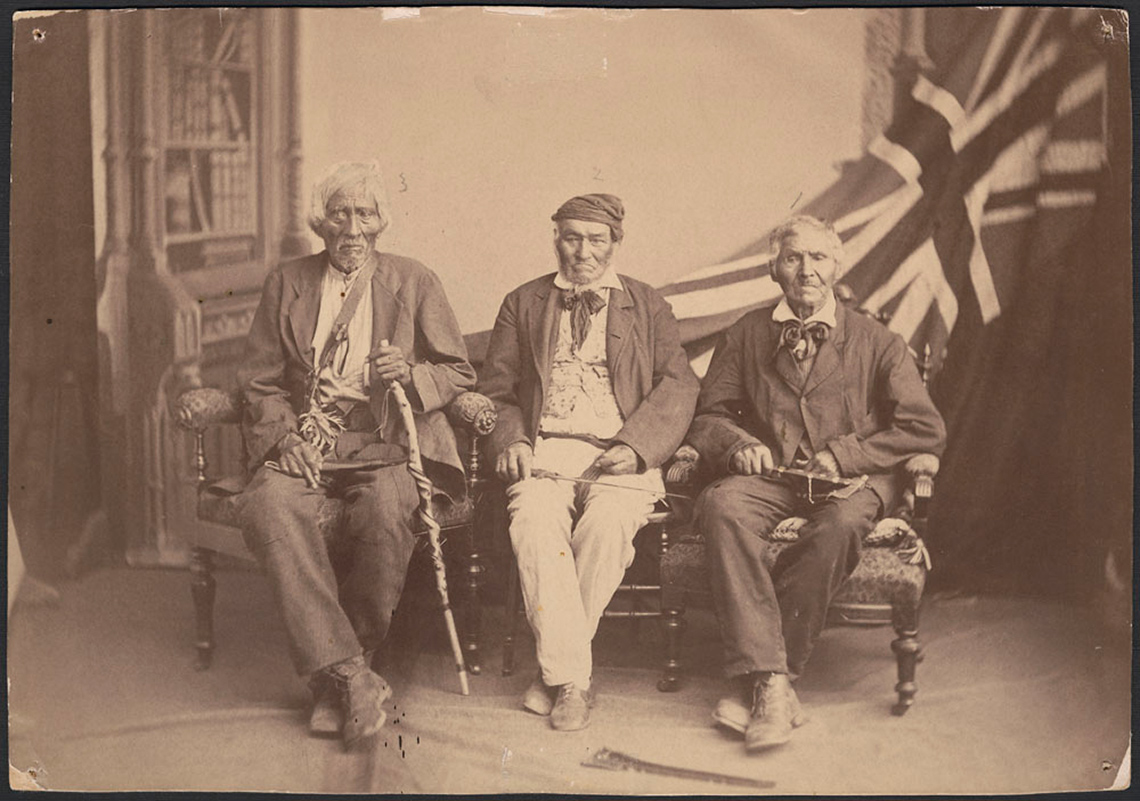
Two Shawnee brothers, Tecumseh and Tenskwatawa, begged Indigenous peoples to unite and fight together with the British to defend their lands against the American settlers. Tecumseh and his 2000 warriors fought throughout the war with the support of Major-General Sir Isaac Brock. It is said that Tecumseh rode beside Brock during the Battle of Detroit, and Brock gave Tecumseh his own sash as a sign of respect. Tecumseh was killed in battle in October 1813.
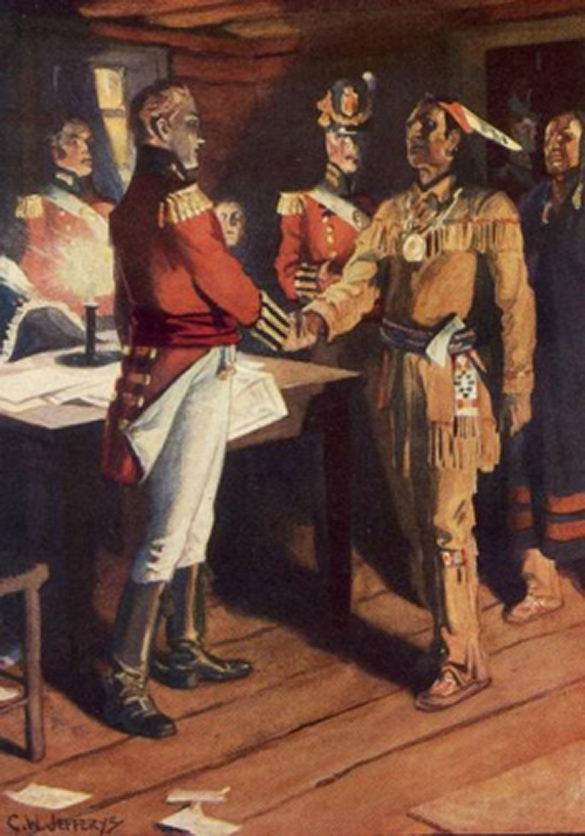
Illustration of Major-General Isaac Brock and Tecumseh shaking hands.
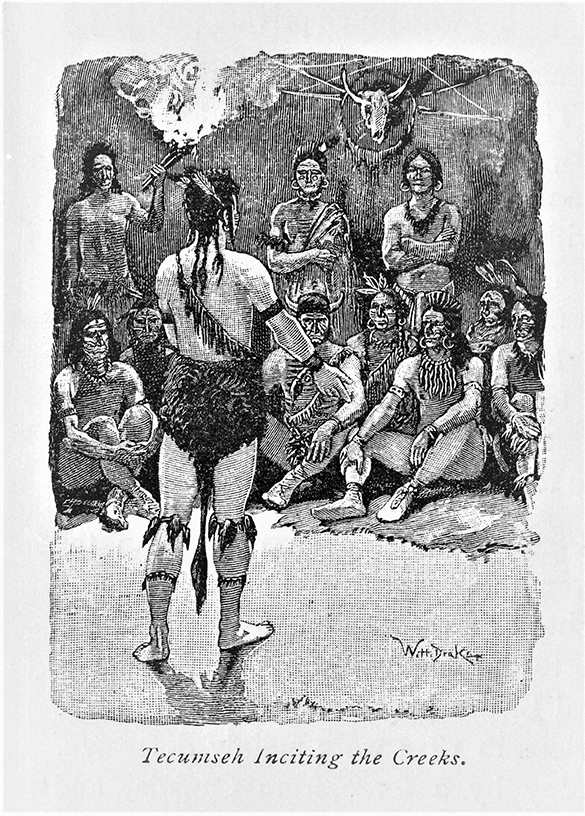
Illustration of Tecumseh talking to a group of Indigenous people.
In July of 1812, shortly after the war began, the American Fort Michilimackinac was captured by force under the British. After the word of this victory spread, more Indigenous people joined the British cause. The following images are of only a few of the other major battles that Indigenous peoples fought in:
Source: Government of Canada; Indigenous and Northern Affairs Canada. (2016, February 16). Exhibit: Indigenous Contributions to the War of 1812. Government of Canada; Indigenous and Northern Affairs Canada. https://www.rcaanc-cirnac.gc.ca/eng/1348771334472/1607906032957#chp8a.
Source: Marsh, J. H., & Burton, P. (2012, March 6). War of 1812. The Canadian Encyclopedia. https://www.thecanadianencyclopedia.ca/en/article/war-of-1812#.
These were only a few of several battles that various Indigenous groups fought in during the War of 1812. It is important to know that First Nations peoples played more than just a “support” role to British militia during the war. Historical documents indicate the First Nations and Métis were active combatants in nearly every single major battle of the war.
In the next section of this learning activity, you will analyse how the War of 1812 impacted First Nations communities in Canada.
Task 4: Outcome
In 1814, Americans again invaded Upper Canada crossing the Niagara River. It came to be the bloodiest battle of the war: The Battle of Lundy’s Lane. Troops were exhausted, it was pitch black, and they had a hard time telling friend from foe. Facing a stalemate, the Americans withdrew to Fort Erie.
In November, after a three-month standoff, the Americans again withdrew across the Niagara River. This effectively ended the war.
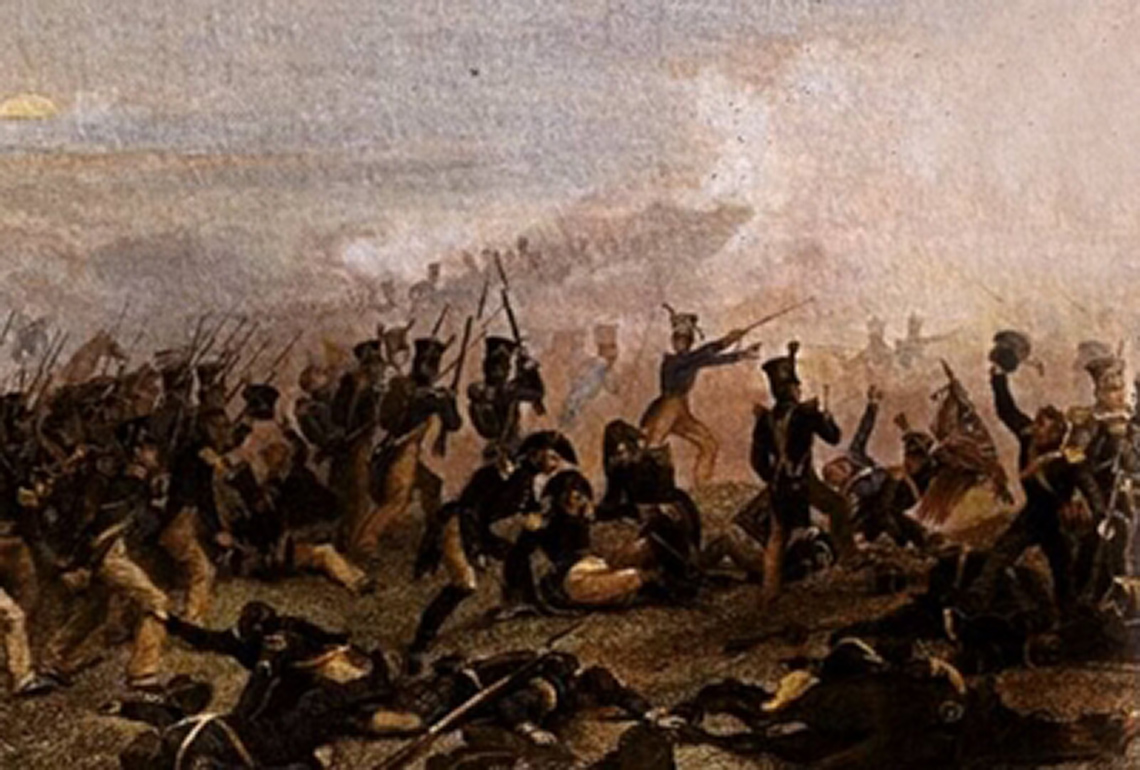
In December, the British and Americans met in Ghent, Belgium and signed a peace treaty called The Treaty of Ghent. Peace negotiations had begun a year before, and the treaty largely restored relations between the Americans and British to the conditions prior to war. No territory was lost by either nation, and both sides felt victorious. In Ghent, both sides selected fifteen points to discuss, and agreed on eleven of those points. Both sides were asked to stop their actions against First Nations communities. The British were to stop providing weapons for Indigenous groups to take up action against the United States.
An American outpost, Fort Mackinac, had been seized by the Métis and British during the war. The Treaty of Ghent gave this post back to the Americans. Many settlers, and the Métis, moved to Drummond Island. In 1822, once land surveys were completed, Drummond Island was deemed part of American lands, and the Métis were forced to relocate again. For First Nations in Canada, the end of the war marked a shift in Indigenous relationships. Now that the British had peace with Americans, they stopped cultivating military alliances with First Nations people. This post-war era also saw an increase in assimilation policies to settle First Nations peoples on reserve lands. This led to devastating consequences for First Nations communities and cultures.
Brainstorm
What do you think?
Examine the following paintings. These paintings depict the signing of the Treaty of Ghent. Whose perspective is not being represented in treaty negotiations?
Press the ‘Hint’ button if you’d like some help with this question.
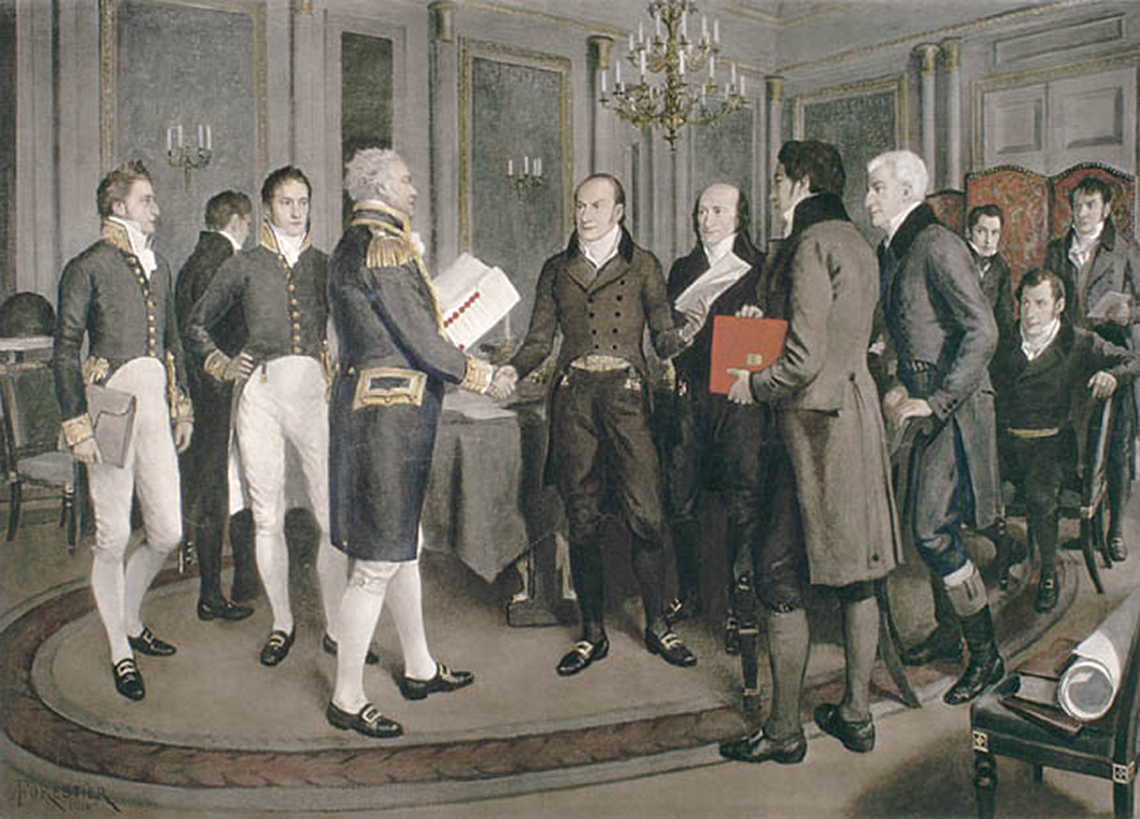
A painting of a group of white British and American men talking in a room. Two of the men are shaking hands, and one man is holding a piece of paper. The room is nicely decorated and then men are well-dressed. The men appear to be politicians or military leaders.
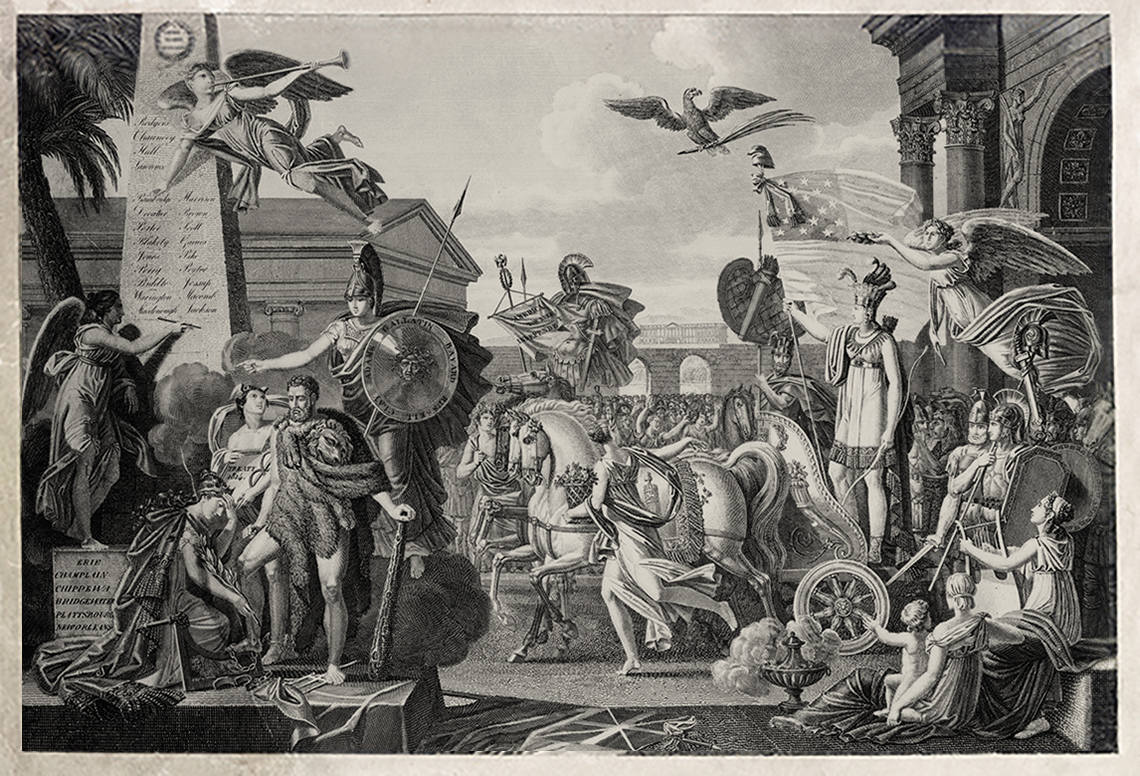
An illustration that depicts the signing of the Treaty of Ghent. The illustration is a fantasy, with angels, trumpets, carriages, and people celebrating in a parade. The people are all European, and they are dressed in the style of Ancient Rome. There is a man dressed as a king waving an American flag to a cheering crowd.
Who won the War of 1812?
So, who won the War of 1812? Based on the evidence in this learning activity, who do you think won the war? Why? In a method of your choice, share who you believe were the “winners” of the War of 1812 and why.
You could read the following article Who Won the War of 1812? as a starting point.
Consolidation
Task 1: Test your knowledge

Use the information you have learned about the War of 1812 to help you answer the following questions. There are a series of multiple choice and matching questions, followed by short answer questions.
The War of 1812 quiz
Rank the following battles from 1 to 4 based on the order they occurred in (put a 1 beside the battle that occurred first, a 2 beside the battle that occurred second, and so on).
Complete the following short answer questions using a method of your choice.
- Choose one of the battles from the War of 1812 and explain it in detail. Who was involved? Where did it take place? How were First Nations groups involved? What was the outcome?
- Explain the role of Indigenous groups in the War of 1812.
- What was the outcome of the War of 1812? What impact did it have on Canadian and American relationships? What about Indigenous communities?
Task 2: Was it a turning point?
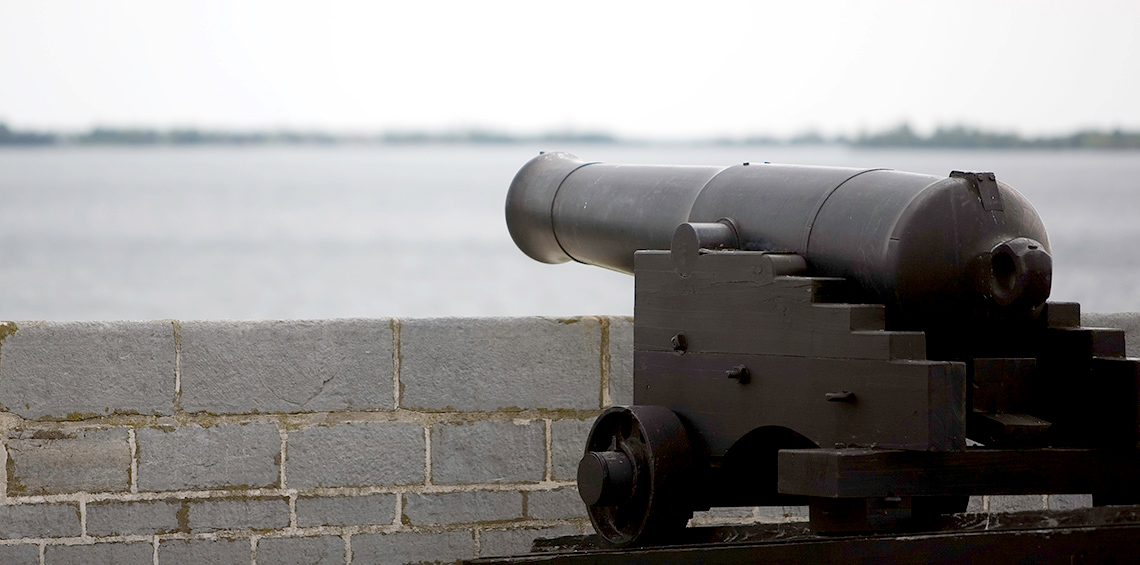
In this learning activity, you have explored the causes of the War of 1812, a few significant battles, the involvement of First Nations and Métis communities, and the outcome of the war. Assess the historical significance of the War of 1812 using the following questions. If possible, discuss the questions with a peer.
- What change(s) happened because of this war?
- Did the War of 1812 result in change for many people or groups?
- What were the immediate, short-term, or long-term consequences of the War of 1812?
- What were some significant positive and negative consequences for those involved in the war?
Write an opinion paragraph that outlines whether or not the War of 1812 was a turning point in Canadian history. Support your opinion with evidence from your learning.
Reflection
As you read the following descriptions, select the one that best describes your current understanding of the learning in this activity. Press the corresponding button once you have made your choice.
I feel...
Now, expand on your ideas by recording your thoughts using a voice recorder, speech-to-text, or writing tool.
When you review your notes on this learning activity later, reflect on whether you would select a different description based on your further review of the material in this learning activity.
